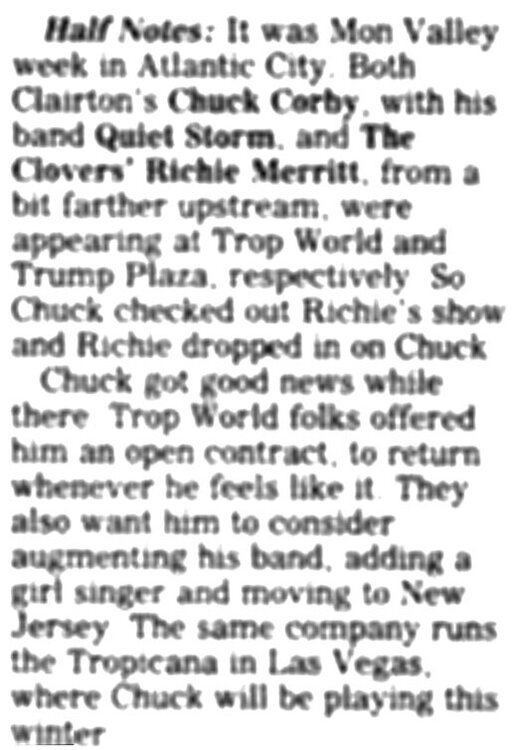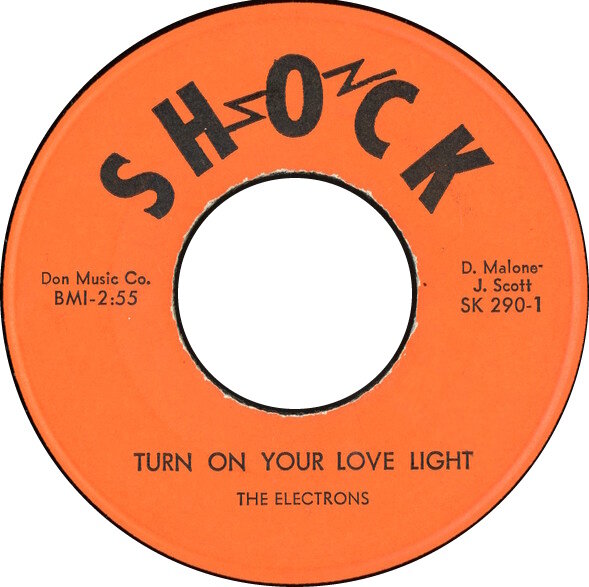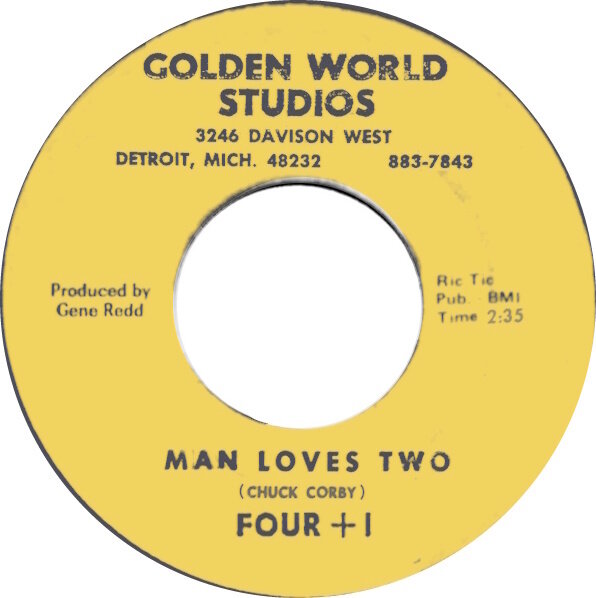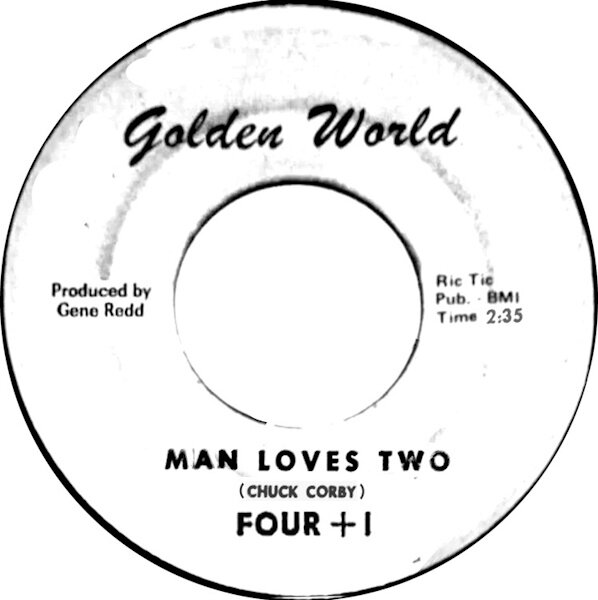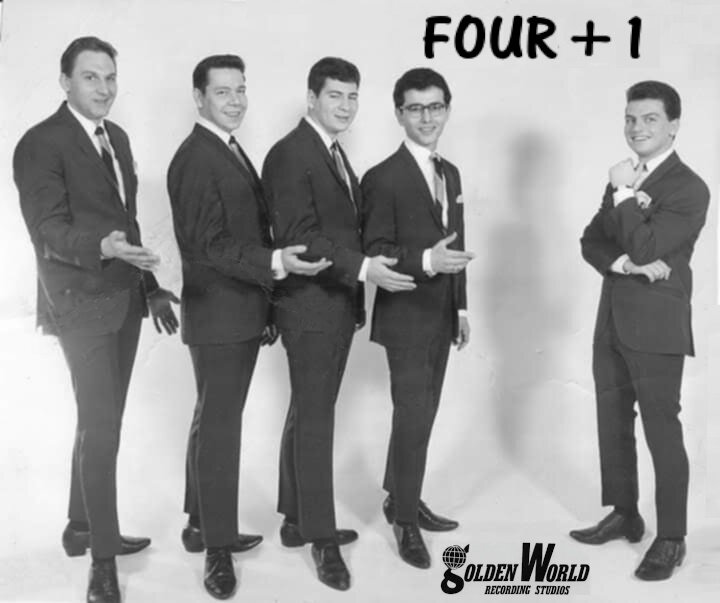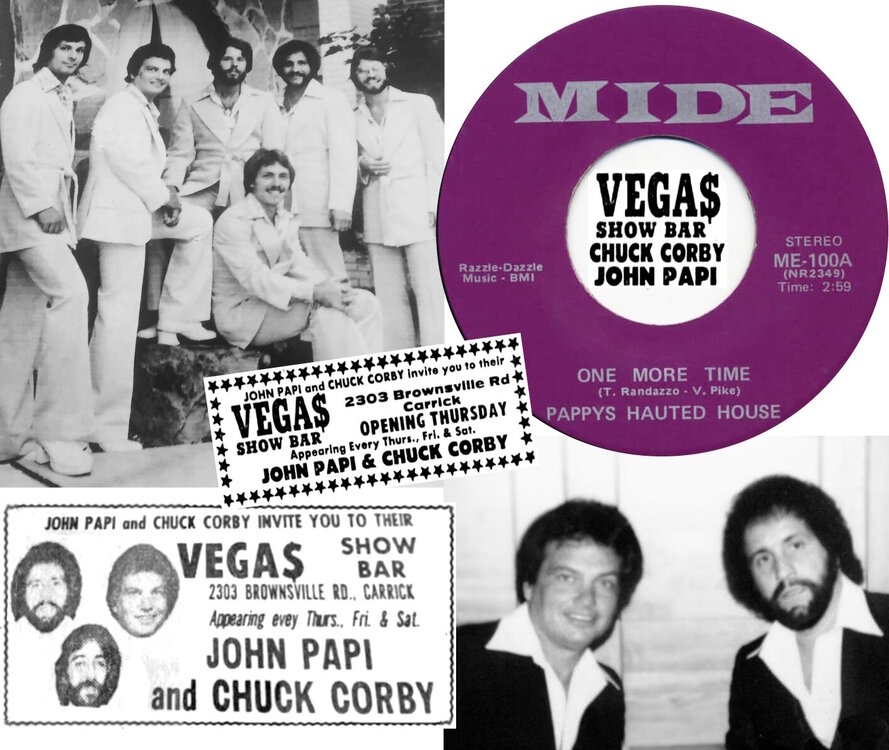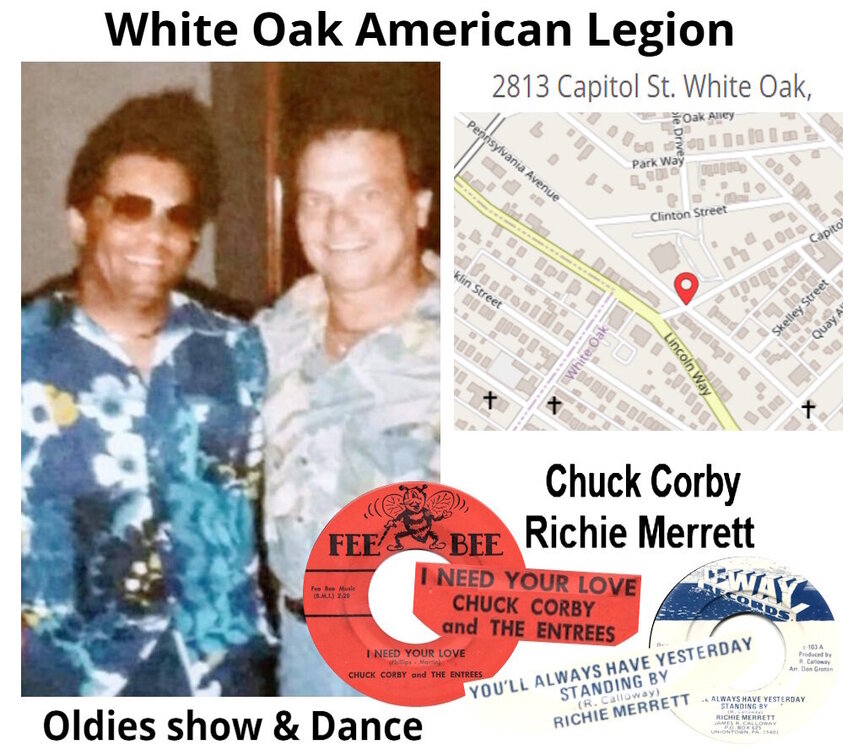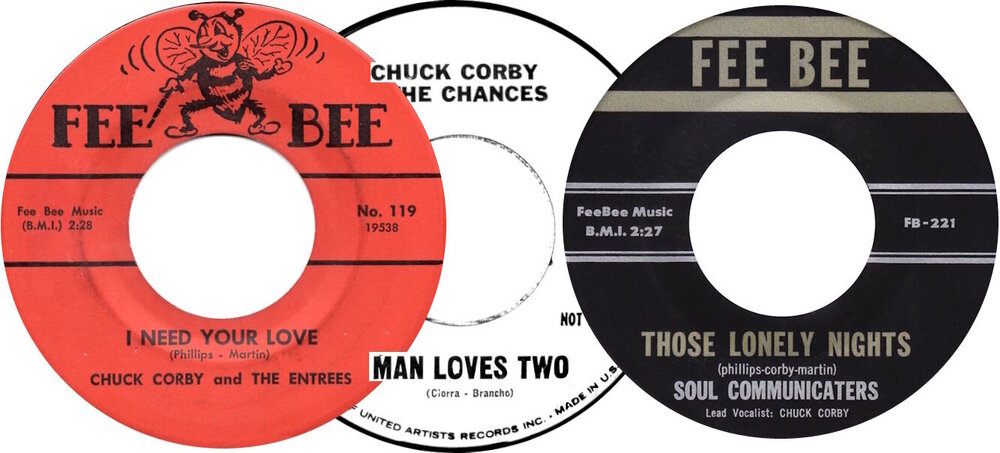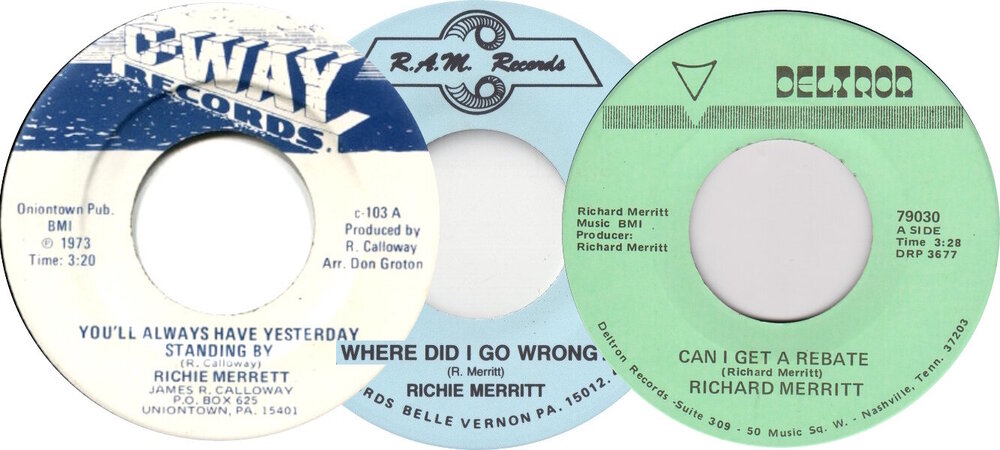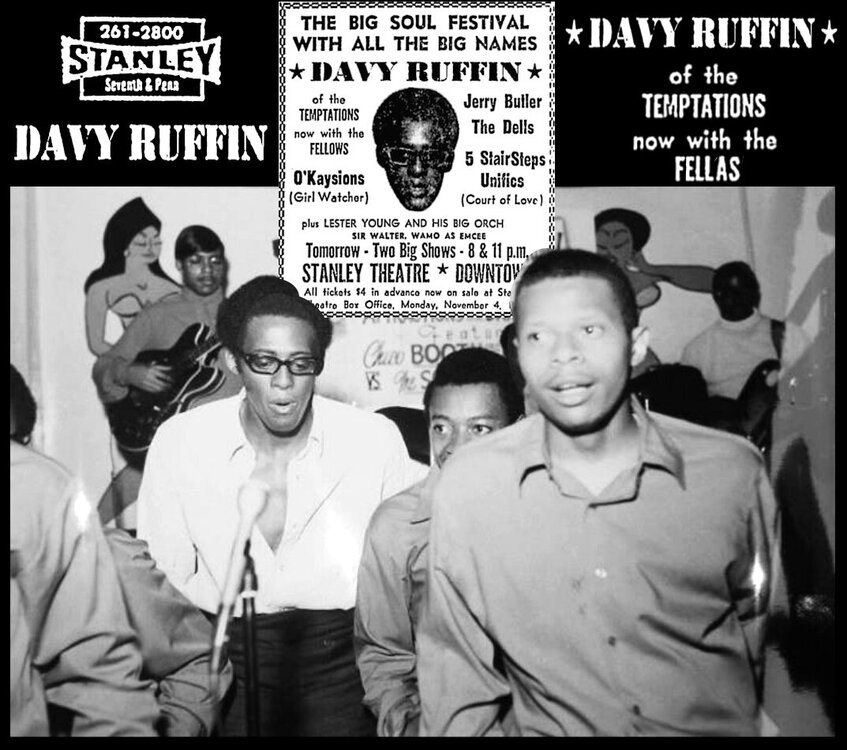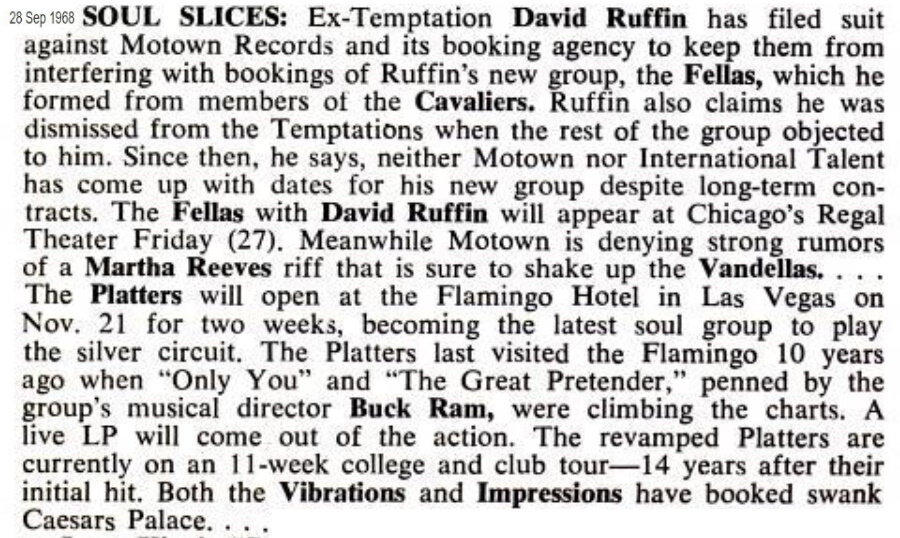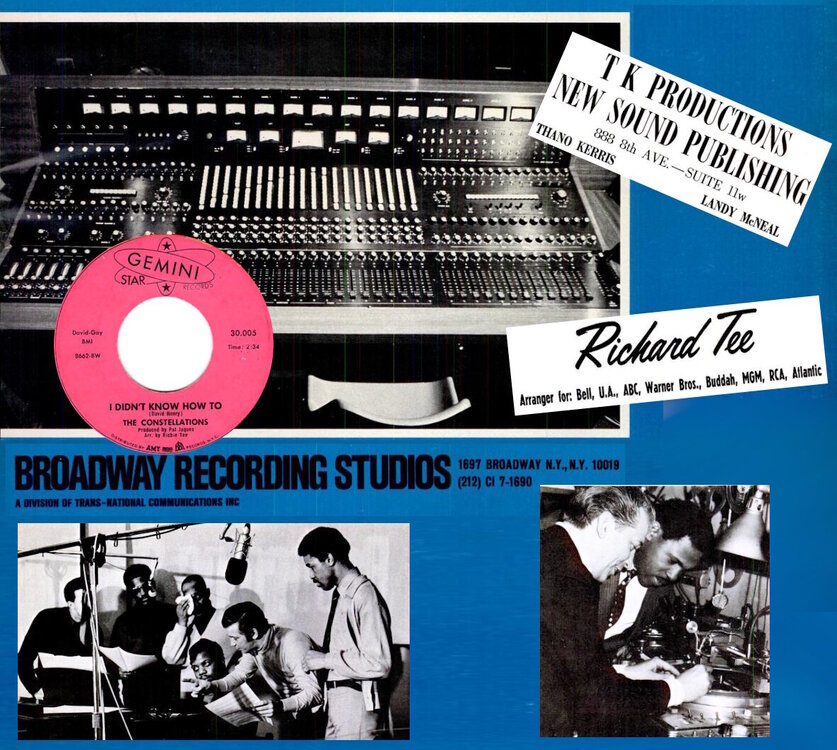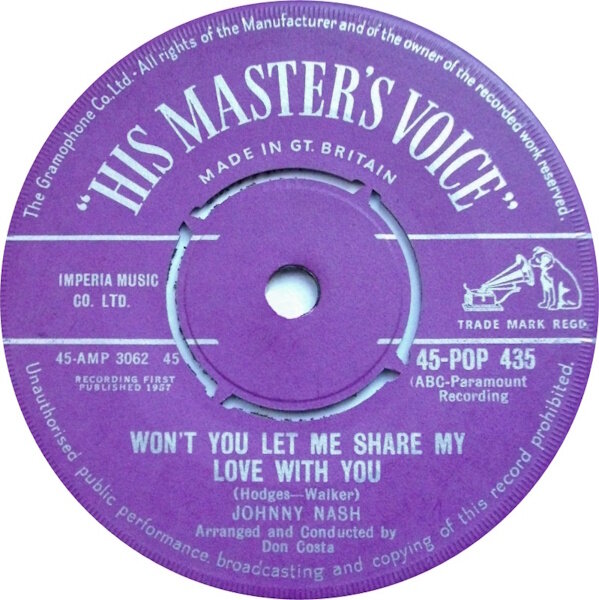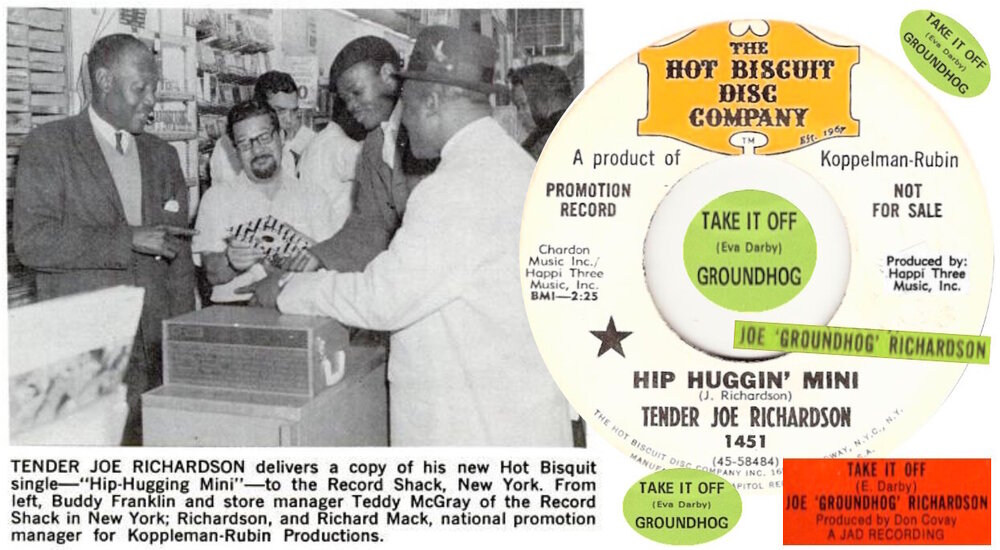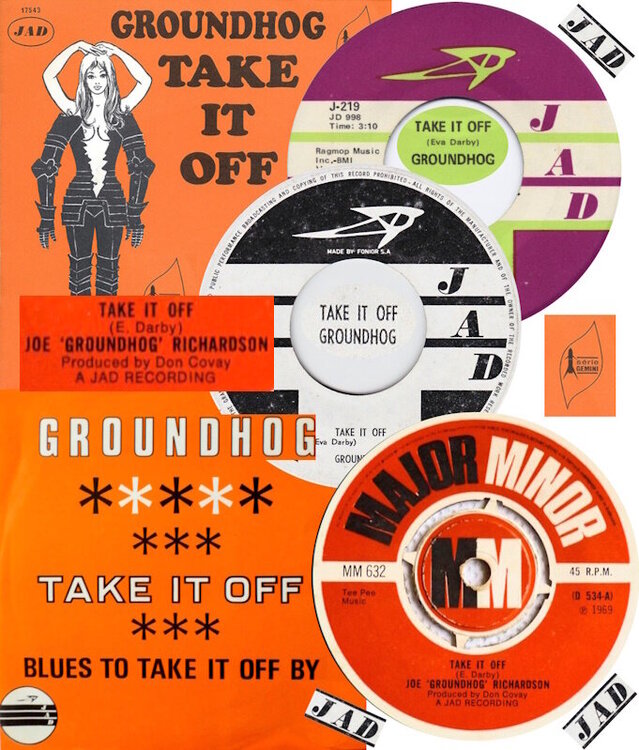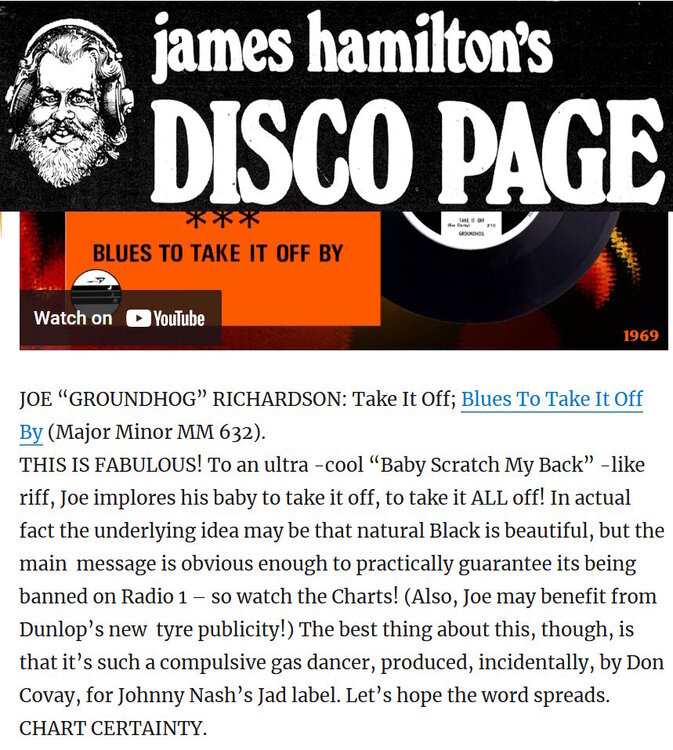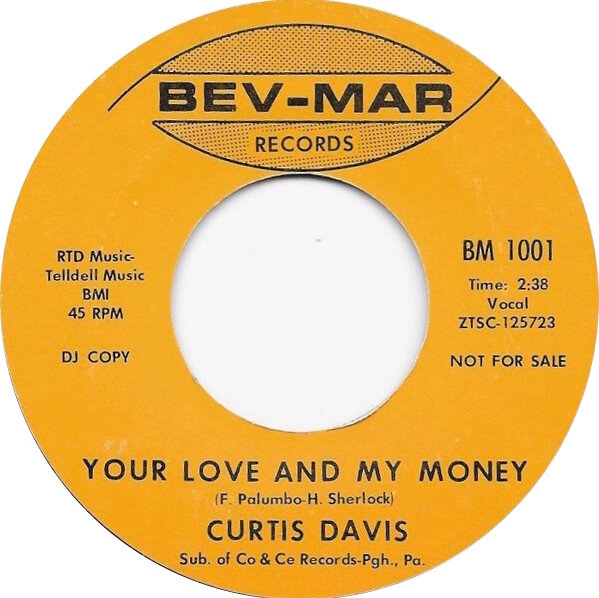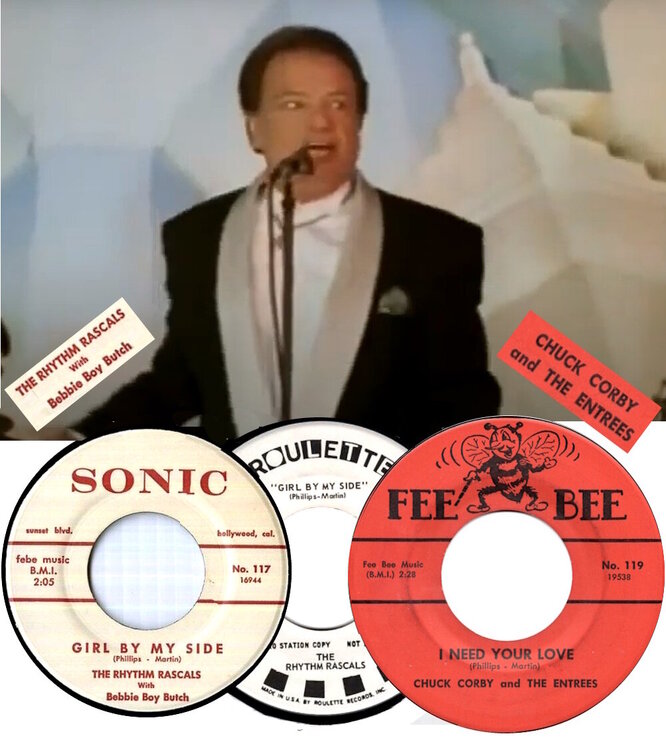-
Posts
7,222 -
Joined
-
Last visited
-
Days Won
45 -
Feedback
0%
Content Type
Forums
Event Guide
News & Articles
Source Guidelines and Help
Gallery
Videos Directory
Source Store
Everything posted by Roburt
-
Yes, and the Tami Lynn on Soul Sounds (70) was played in clubs, just as the UK black Atlantic (66) and Mojo (71) versions were.
-
Just touched base with Chuck again. CHUCK: Just put a call in to Richie Merritt in Florida we'll be going over the details for the show April 26th at the White Oak American legion. Richie and I have many memories of working together over the many years we've known each other. We have share the stage with some of the greatest performers in the country. One of the greatest memories is when we were both performing in Atlantic City back in the day, Richie was performing at Trump Plaza with the Clovers I was at Trop world with my group The quiet Storm. Like I said we have known each other since the 60s but never did a show on stage together until now. We are both truly looking forward to it and I'm starting to really get pumped up about the I've always been a big fan of Richie. When we were in Atlantic City I enjoyed Richie and the Clovers so much I went back twice to watch the show once alone and the second time with the members of my group. This would be a great experience for both of us and be able to work together in front of our hometown audience .We're hoping that we'll see you April 26th White Oak American legion White Oak PA Richie was in lots of Pittsburgh doo-wop / soul groups in the 60's & 70's. He had a stint in the military (1966-68) when he was based in Europe & performing on USO shows over there when off duty. He sang lead for the Electrons from 68, then moved on to front the Vibrators. After that he had spells with the Drifters, Marcels & the Clovers. Richie was with the Clovers in Atlantic City in the 90's when Chuck was also performing there with his Quiet Storm group. Richie relocated to Florida some time back, he does shows there as 'Richie Merritt & The Gems' featuring a revue that salutes Little Anthony, Marvin Gaye, Jackie Wilson and similar soul acts.
-
Until around 1969, import soul 45's were quite hard to come by (hence Ian L becoming the big 'I AM' when he brought his big Florida haul back to the UK). You could get a few from Soul City's shop (if you were quick, as they only bought a handful of each title) or you might pick one up off a specialist dealer via their mailed-out auction lists ahead of 69. But access to cheap US import soul 45's only really became really possible from 69 when F L Moore (Leighton Buzzard) joined the game. So till then, 99% of soul 45's played in clubs were UK released things (or US copies ofknown UK released things now deleted that you'd sent away to Ray Averys or Randys for). Jay Boy came into life in 68 but only started putting out NS sounds in 71. They were played though. Earlier (66, 68, 69) the likes of President & Sue were re-releasing things here and those 2nd issues were all played. So just when did OVO become the norm ? ... After all the NS reissues started making the charts I guess. That started from 71 but I can't recall OVO ever raising it's head till much later in the 70's (after 77 ?).
-
Having attended my 1st soul clubs in 65 & going to niter clubs from 66, I never did get the OVO thing at all. We'd have danced to any version of a 'top soul sound' back in the day ... ... ... coz it was what was 'in the grooves' that counted, not where & when those grooves had left the pressing plant. Mind you, dancing to lots of the pop sh*te spun @ the Casino I would have a lot of trouble with.
-
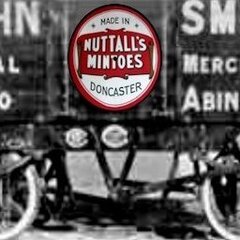
Eddie Holman United New Gospel release on Charly
Roburt replied to Eddie Hubbard's topic in All About the SOUL
Seem to recall that the original Charly release didn't sell out at the time (85) & that copies were around in1986 for around £1 a copy. How it has gone from there to it's current selling price (£150 to £250 / copy) I have no idea. He's about to tour here again though, so no doubt that has increased demand for lots of his old releases, this LP included I guess. -
-
FROM CHUCK ... Chuck & Richie -- about our show April 26th at the White Oak American legion (hoping to persuade John Papi to attend too) ... it was in the 1960s when the three of us became long time musical Brothers. Richie Merritt and I both worked with John Papi and we have so many great memories. After the Entrees and I broke up, I joined John Papi and his trio. And that's when I officially met the great Richie Merritt. I knew of his work and his success, but never officially met him until John introduced us -- I believe actually it was at the Panther Room on Route 51 ... then again at John's Cocktail Garage on route 51. I remember when Richie would come in and he would tear the house down and he's still doing that today .John Papi has retired but still a big part of our lives. He was a big part of our careers, and hopefully he will be there on the 26th of April and share some of our great memories. As you will know, in this business it's full of jealousy, larger than life. He goes with an honestly, says it from the heart. Richie and I both love and respect John Papi, as a man and for his tremendous talent. He is one of the best that ever played the B3 organ and quite a businessman. Richie I am truly looking forward to the three of us hopefully being together one more time.
-
Not an event many of us here will be able to get to, but still thought it worthy of mentioning -- APRIL 26th - east of Pittsburgh
-
As you can see from the above, the Constellations cut @ Broadway Recording Studios. They were with Gemini Star Records. After David Ruffin was tempted back to Motown with a solo contract, he had to quit performing with his 'new group' the FELLAS. The FELLAS were actually RCA's the Cavaliers (who included younger brothers of some Temptations members). So as not to completely abandon his then associates, he arranged for them to be signed by Gemini Star. The label went under shorty afterwards, so whether the guys ever cut any tracks for Gemini Star is unknown -- but if they had made it into the recording studio, I guess it would have been @ Broadway Recording.
-
-

WHAT ARE THE BIGGEST 'MODERN' NIGHTER SOUNDS?
Roburt replied to Paraboliccurve's topic in All About the SOUL
-

WHAT ARE THE BIGGEST 'MODERN' NIGHTER SOUNDS?
Roburt replied to Paraboliccurve's topic in All About the SOUL
Yes, at least for the last 45+ years .... https://www.mixcloud.com/spurs1961/richard-searlings-clifton-halls-rotherham-all-nighter-the-music-the-memories/ -
R.I.P. Snowy; a top Donny soul guy has left the building ... I got to know Snowy when still in Donny in the late 60's. He used to visit my house in Hexthorpe with some of his mates who were soulies / skinheads. This was the period when the Attic Soul Club was transitioning into a skinhead haunt. His mates, mainly, wanted to plunder my ska / reggae collection but Snowy was always more interested in my soul stuff. I got a new (better paid) job, so was able to move to a bigger house in Balby and Snowy was still visiting me even then. He bought many of my 'better' NS 45's off me (having a young family, I no longer went to niters & going to the Torch, Casino was of no interest to me at all). He was a regular in Wigan and knew all the top current sounds. Thus things like my issue of Tobi Legend, my Artistics Okeh demo and many more singles changed hands. I left Donny and others (Paul Temple, etc.) were also soon plundering my collection, but (on & off) I stayed in touch with Snowy. I was living in Worksop when he had his (1st ?) record shop. I recall a tale he told me about an old guy who came into his shop to try to sell a bunch of classical albums. Snowy explained that they were of no value, but thumbed through the pile anyway. He happened on an LP that featured a violin on the cover ... WHY'D YOU GET THIS, IT'S NOT LIKE THE OTHER ALBUMS IN THE PILE ... Ohh, that was a mistake, I saw the violin & thought it was classical music, but it wasn't, I never played it after the 1st time .. needless to say, Snowy bought just that one LP off the guy. R.I.P. Snowy .. Another encounter with Snowy comes to mind. Early 70's -- the place to go to get SOUL SOUNDS 45's back then was Boylans in Conisboro. I went over to get some top Wheel sounds at a decent price & Snowy was in the shop too. He asked what my current 'new' top want was & I told him it was Marvin Smith's new Mayfield Records 45 (so it must have been early 71), he noted my comment and went about his way (I think he'd also bought a few 45's that morning). Snowy was an ever-present about town & on the scene as far back as then.
-
-
Pittsburgh had quite a few good blue-eyed soul singers (Chuck Corby, Jimmy Beaumont, etc.) and up there as one of their best was Johnny Daye. Johnny had 2 x 45 released on Jomada, so he was part of the Pittsburgh / New York connection. However his best outings were on the local Blue Star label (the tracks being cut @ Gateway Studios) and his later efforts for Stax. At Stax, he cut "Stay Baby Stay" ....
-
Gene's version of SOUL SERENADE ... he was recorded playing this live @ the Blue Note Club, New York ... and a clip of Gene & his trio playing live back in 1969 ..
-
Gene Ludwig gets a few mentions in this thread. Here's a run down on his career ... Gene Ludwig was born in Twin Rocks, Pennsylvania on September 4, 1937. Four years later his family moved to Swissvale where Gene spent most of his youth and graduated from Swissvale High in 1955. His mother had Gene take piano lessons from first grade and his musical growth began there. His mother wanted him to become a concert pianist but he soon realized that his musical preference lay in Rhythm & Blues. After a series of early jobs, Gene was ready to make a life long commitment to music. He had spent time listening to musicians like Ramsey Lewis, Horace Silver, Ahmad Jamal and Ray Bryant at The Crawford Grill and the Hi-Hat in Pittsburgh but when he got to see Jimmy Smith for the first time (at the famous Hurricane Lounge) his mind was fully made up. "Around '57 I met Jimmy Smith and heard the Hammond...and I knew that's what I wanted to be: a Hammond organ player". Around 1949 or 1950, he had heard the likes of Bill Doggett's music, but that hadn't tempted him to quit the piano. But when he heard Jimmy Smith playing the Hammond it was so awesome, he was ready to change instruments. Gene's first Jazz Organ Combo was led by tenor saxophonist, Sonny Stanton. They gigged around Pittsburgh & even travelled to Cleveland before Gene made the switch to another quartet led by Gene Barr. This group played further afield (St. Louis, Indianapolis, Philadelphia and Buffalo). Gene's musical change (to an organ) started around 1958 and by 1962, he was playing rooms like the Hurricane Lounge himself. He had first met Jimmy Smith and then he got to see Milt Buckner... he soon got to see Groove Holmes Jimmy McGriff & Jack McDuff... not much later he was playing the same club as them for eight weeks out of the year (with his own trio). This continued from 1962 until the club had to close because of the '68 riots. His group included drummer Randy Gillespie and sometimes Jerry Byrd. The trio first recorded for the local LaVere label (“Gospel Goodness”). Gene got a new manager & this change resulted in even better gigs. One night while playing in Newark, Nesuhi Ertegun from Atlantic Records stopped by to hear Gene's trio and wound up offering them a recording deal. The resulting track, “Sticks and Stones” (1963) got favourable air play in Pittsburgh. An album followed on the Mainstream label titled 'Organ Out Loud' (#6032; 1965) and this also escaped (as 'The Hot Organ') on Time Records. This album included his take on “Coming Home Baby”). In 1966, 'Mother Blues' was released on the Jo-Da label. Another recording of his from this period came out on Travis & Gene was also doing a little work for his own label; Ge-Lu Records ('This is Gene Ludwig', GL-1415). Gene had by then been leading his own trio for some years. Up in New York, Gene had a 45 out on Jocida in 1967. But his trio's guitar player went off with Jack McDuff's group, Gene then hooked up with Wilbert Longmire. Then Wilbert quit the band (he would record in his own right in 69) and Pat Martino replaced him. Gene co-led the group with Pat and they worked up and down the East Coast. But in 1969, Gene got the chance to record with Sonny Stitt. This was the start of a valuable new musical relationship for Gene. Sonny took Gene under his wing and taught him a lot (Gene growing as an organist during that period). Pat Martino decided to leave when Gene started to work with Sonny Stitt. Pat did, however, appear with the group on Sonny Stitt's 'Night Letter' LP (Prestige #7759; 1969). Gene only worked with Sonny Stitt for a year but it was one of the fondest times of my whole career. Returning to Pittsburgh, Gene hooked up with Bill Easley and then Walt Maddox before placing one of his own productions with Steel City Records. Next he went on the road with Arthur Prysock (in 1974 and then again in 1979). During the same period, he'd play support for local groups / vocalists back in Pittsburgh when he was home. Soon after, Gene got to record again. For Muse Records, he cut 'Now's The Time' (MR-5164; 1980) which featured a strong mix of jazz organ grooves (at that time jazz organ tracks were a bit out of favour). His musical career continued & eventually he got to record again, as well as appearing at the Montreaux Jazz Festival in Switzerland. In 2000 his album 'Soul Serenade' was released by Loose Leaf, the title track being his take on the old 60's soul standard tune.
-
Arthur Jenkins (part owner of Jad) wasn't an official member of the Latin Jazz Quintet but he did play on many of their tracks between 1961 & 1965, here's one of them ... "Mambo Bobbie" the album this comes from was reissued in the UK & Japan in the 90's (& twice more since in Japan)
-
Johnny Nash's 2nd UK 45 -- issued here in late 57 or very early 1958 ... it was the HMV single released just ahead of Danny & the Jnr's "At The Hop".
-
More info on one of the other Jad acts ... Joe 'Groundhog' Richardson ... who also had stuff out on other labels (including Turbo, so Steve G might know more about him) ...
-
Phillips & Martin were the guys who wrote the song originally. The song was 're-worded' & used again by Chuck & the Entrees (as using the original backing track & just adding the new vocals was a much cheaper option to cutting a whole new track) -- I'll still ask Chuck who they were though. BTW, Curtis sang with the Arketts too (the group comprising Argie Lyerly, Marian Lyerly and Pat Hendricks) for Ronnie Records ... AND this is Curtis yet again on another expensive Pittsburgh 45 (below) ...
-
Chuck (Corby) has got back to me to say that one of the guys in Curtis & the Showstoppers (Rodney Allen) was with him as a member of his backing group, the Entrees. Rodney now lives in LA. Chuck also knew Gene Ludwig really well.
-
It was Odell Bailey who sent Chuck Corby & his then group (Four Plus One) to Golden World in Detroit to cut the songs Chuck had written -- “Man Loves Two” & “Happy Go Lucky”.
-
What Sir Shambling has to say about Vic & Joe .... no bio info ... but the arranger on their track was Arthur Jenkins, so it must have been cut in New York ... Arthur Jenkins was a jazz based keys player, so he might have brought Gene Ludwig to Jocida. Arthur Jenkins was (later) in the group Cousin Ice that had lots of releases (they cut a house version of "Can I Get A Witness" among other things). https://sirshambling.com/artists_2012/V/vic_joe/index.php
-
A couple of the tracks shown above ...



